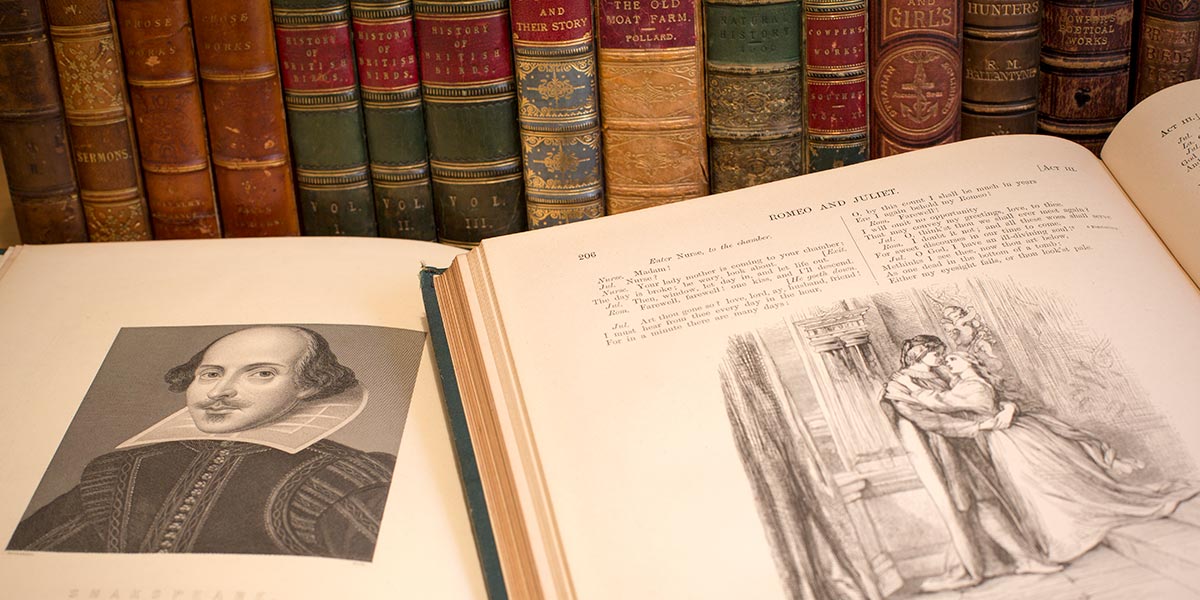1-Define humanism. What are the basic principles of humanism?
Humanism was an attempt to break away from the rigid discipline of the Church. It concerned itself with human interests rather than theological teaching. It was a revolt against the other worldly orientation of medieval philosophy and religion.
The thesis of humanism was that man’s proper role in the world was action not contemplation. Wealth and power were not necessarily evil, since they might provide the means of achieving good.
The ‘mind’ and the ‘will’ had to be properly disciplined, but they were to be used positively, not renounced for the sake of the salvation of the soul. Passion, striving for glory, “the aspiring mind” were to be encouraged when the motives were noble, and becoming the master of the earth and thereby achieving benefits for mankind was a noble motive.
Realism
The emergence of the individual and the idea of human dignity
Active virtue
2-What are the consequences of humanism in the Renaissance period in general?
During the Renaissance, Humanism played a major role in education. Humanists —proponents or practitioners of Humanism during the Renaissance—believed that human beings could be dramatically changed by education. The Humanists of the Renaissance created schools to teach their ideas and wrote books all about education. Humanists sought to create a citizenry able to speak and write with eloquence and clarity, thus capable of engaging in the civic life of their communities and persuading others to virtuous and prudent actions. This was to be accomplished through the study of the humanities: grammar, rhetoric, history, poetry, and moral philosophy.
3-How can you define Renaissance and what are the differences between English and Italian Renaissance?
The term Renaissance applies to the re-discovery and revival of classical literature and studies which began in Italy in the Middle Ages and spread to Northern Europe and Britain in the 16th Century. The period was characterised by an amazing energy, curiosity, creative effort, by a tremendous burst of activity in the arts of painting, literature, sculpture, architecture. Social life was increasingly secularised. Individualism grew.
Idea of nationalism is one of the differences between the English Renaissance and Italian Renaissance. In Italy, in those days, people were the citizens of different cities: That is to say, they were divided into different cities like states and there was no concept of nationalism in the country. In England, however, this spirit of nationalism brought glory to the country. There was a perfect solidarity and harmony among the English people. They were united.
The second difference between English Renaissance and Italian Renaissance was that England broke off from the Roman Catholic Church and established her own Anglican Church which was thoroughly protestant. So the Renaissance and the Reformation went hand in hand in England.
The third difference is in the field of literature and arts: In Italy there was a tremendous burst of activity in the arts, of painting, sculpture and architecture as well as in literature whereas in England such a brilliant activity can be observed only in the field of literature especially in poetry and drama.
4-What was the aim of Reformation?
It was A 16th Century religious movement against the abuses in the Roman Catholic Church.
Reformation, from the point of view of those who supported it, was a return to pure Christianity-cleaning the church of all the filth and abuses that had accumulated over the centuries. It was also both the secularisation of society and the establishment of princely ascendancy (superiority) over the church and consequently the identification of religious feelings with patriotic and nationalistic ones.
5-Explain the causes that prepared Reformation in Europe and in England as well as the results it brought?
Causes
The invention of the mechanized printing press, which allowed religious ideas and Bible translations to circulate widely.
The desire of many people to read the Bible in the language they spoke at home rather than in Latin.
The desire of many people to rely only on the Bible for religious guidance and not on tradition or current teachings.
A belief that forgiveness comes only from God rather than from a combination of faith and good deeds.
The desire of rulers such as Henry VIII of England to break free from the pope and the Roman Catholic Church
Effects
The emergence of Protestantism, which became one of the three major branches of Christianity (along with Roman Catholicism and Eastern Orthodoxy).
The establishment of many Protestant churches, groups, and movements.
Translation of the Bible into German, French, English, and other languages.
The Counter-Reformation, a movement within the Roman Catholic Church to reform and revive itself.
Improved training and education for some Roman Catholic priests.
Protestant worship services in the local language rather than Latin.
6-State the characteristics of the sonnet form with necessary references to, at least, two sonnets written by Wyatt, Surrey or Sidney
- Generally a lyric poem (meaning that it’s about the speaker’s emotions; it doesn’t tell a story). (as we see in Astrophil and Stella, sonnet 18)
- Fourteen lines (also sonnet 18 is written in 14 lines)
- Each line is in iambic pentametre.
- Different types of sonnet have different rhyme schemes.
- Shakespearean(English) sonnet abab cdcd efef gg
- Italian sonnet: abba abba cde cde OR abba abba cdcdcd
- The rhyme scheme divides it into two parts. The first eight lines (octave) ask a question, describe a situation, tell how things were, etc. The last six lines (sestet) answer a question, say how the situation has changed, tell how things are or will be, etc. That is, there’s a change of some sort (the volta) between the octave and the sestet.
The elements of the Wyatt/Surrey sonnet are:
- a quatorzain, written with a Petrarchan octave followed by an envelope quatrain ending with a rhyming couplet.
- metric, primarily iambic pentameter.
- the rhyme scheme is abbaabba cddc ee.
- it is composed with the volta (non physical gap) or pivot (a shifting or tilting of the main line of thought) sometime after the 2nd quatrain.
- distinguished by the declamatory couplet
7-Discuss the theme of betrayal/fidelity in Elizabethan love poetry referring at least to two poems.
In sonnet 137 and 151
8-Discuss Sidney’s approach to the theme of desire in the sonnets 71 and 72.
Sidney’s approach to theme of desire is psychical. Even though he shows his love and affection through the poem, it can be understandable from the theme of desire that his real intention is related to one of the deadly sins, lust.
9-How does Sidney’s poetry reflect him as a man of Renaissance? What made his poems typical of Renaissance poetry? Discuss with necessary references to, at least two of his poems.
If a person goes through the sonnets 71 and 72 of Astrophil and Stella, he/she can possibly see that Sidney’s poetry reflects a renaissance mood, unapproachable, nearly flawless woman, a desire for lust and platonic love. traditional methods such as addressing the moon and the world of sleep and dreams, mourning the lady’s absence, praising her unique beauty, bemoaning her coldness, and highlighting the lover’s frustrated longings.
10-Love is regarded as torture, slavery, hunting, or warrior. How far do you agree with this statement? Discuss it with necessary examples to the sonnets we have studied.
Love should not be regarded as torture, slavery, hunting, or warrior. I do not agree with this statement. Yes, a person can be slave to his/her intentions if we talk about psychical love or platonic love but it does not mean that he/she must be a slave to his/her love to be loyal to his/her partner. A person must fight for his/her love, but this does not necessarily mean he/she must undergo some quests or act as a warrior and hunt his dear lover. Patience, loyalty, generosity must be enough to love. For example, in Astrophil and Stella, a person can easily see that Astrophil tries every way to love Stella, but she is married with someone who does not make her happy. He can make her happy, he fights for her, when there is no option left, he tries to hunt her. Even though his intentions are not so noble, he tries. Love should be in this way.
11-How is the lady reflected in Elizabethan love poetry? Why is she compared to a star, a queen, a deer, even someone who can inspire or whose gaze can control the lover with a look? Is she always idealized? Discuss.
She is not really idealized in my opinion, she is compared to a star or a queen because she is unapproachable, she is compared to a deer because she escapes every time. She can inspire with her look or control the lover with a look as poets in renaissance thought that psychical appearance is also the mirror of soul. But, for example, in Astrophil and Stella, poet made the character Astrophil select his own preferences, there is conflict between love and desire even though how much Astrophil loves deeper Stella. He realizes only way to attract Stella is psychical love.
12-What do you know about Pastoral convention? What are its characteristics? How was it developed and why was it used by the poets in Renaissance period? What was its contribution to English poetry in general?
Pastoral refers to a literary work dealing with shepherds and rustic life. Pastoral poetry is highly conventionalized; it presents an idealized rather than realistic view of rustic life. Conventional features of pastoral elegies include: the invocation of the Muse; expression of the “shepherd”-poet’s grief; praise of the dead “shepherd”; invective against death; effects of the death upon nature (disruptions in climate etc. as expressions of a personified Nature’s grief and sympathy); and ultimately, the poet’s acceptance of the inevitability of death and hope for immortality. It is used and developed in Renaissance period because people were looking for a perfect life to idealise the life they are living.
13-Explain the Elizabethan concept of order. Why was it so important for them? What was the position of man in universe? Answer in detail.
Elizabethans believed that God set out an order for everything in the universe. This was known as the Great Chain of Being. On Earth, God created a social order for everybody and chose where you belonged. In other words, the king or queen was in charge because God put them there and they were only answerable to God (the Divine Right of Kings). This meant that disobeying the monarch was a sin, which was handy for keeping people in their place! It also led to the idea that if the wrong person was monarch everything would go wrong for a country, including whether the crops would be good, or if animals behaved as they should.
God gave two books to man; One was the Bible, and the other was nature; they revealed the same truth. This natural order was not invented by man, nor imposed by him, it was always there and remained to be discovered. Man’s only function was to conform to it. This was his purpose in life as everything had a purpose.
14-Discuss Elizabethan sonnet tradition with special reference either to Wyatt, or Surrey and two of Sidney ‘s sonnets.
In this Petrarchan tradition we have a different concept of love and lady. The poet complains about her, because she is very cold towards him and he describes the feelings of his experiences. In Astrophil and Stella, it can be clearly seen that there is a lady who rejects Astrophil again and again, her expressions toward Astrophil are cold. He expresses his emotions and praises the lady, but it is still not enough.
15-Can Stella be regarded as an earthly, real woman in flesh and blood in Sidney’s sonnet sequence Astrophel and Stella? How far can she be regarded so? Is there any evidence for it? or is she altogether too unearthly to be real? Discuss.
Stella can be regarded as a real woman as she is not flawless even though it is reflected that she is flawless. She is having a marriage that is extremely unhappy. Because Stella is married, Astrophel recognizes that he can never have a full relationship with her. Moreover, he recognizes that his infatuation with her is foolish and irrational. He isolates his friends and family, damages his reputation at court, and threatens his emotional and mental wellbeing through his obsession with Stella.
16-How does Sidney present Astrophel’s character and personality in the sonnet sequence Astrophel and Stella? And also, how does he present Stella’s character and personality? Explain referring to at least two sonnets by Sidney.
Astrophel is an example of a man who lets his emotions get the better of him, something that was nearly unforgivable for an established courtier during the time when Sidney was writing the sonnet sequence. His inability to control his emotions eventually leads him to total despair and the loss of Stella forever. Astrophel’s characterization also can be read as a metaphor for Christian development. His journey from hope to despair is similar to the progression of human desire in Christian terms-or even a mirroring of the fall of Adam and Eve from Paradise.
She understands and returns Astrophel’s love but eventually rejects him Not only is she beautiful, but she also is intelligent and rational. When she begins to return Astrophel’s love, she refuses to allow her emotions to overcome her reason. She recognizes that their love cannot exist and that she must guard herself. Unlike the stereotypical figures of desire in other poetry from the time, Stella is a complex character and, above all, a real woman.
Corresponding to this expectation, Stella has a personal life and a background. Her past has shaped her into the woman whom Astrophel loves. Even if Stella is not Penelope Devereux herself, her personal life is still filled with all of the troubles of a normal person, rather than expressing a romantic ideal. She is trapped in a loveless and even abusive marriage, a fact that Astrophel emphasizes in Sonnet 24. The courtship between the two characters also takes place in real life, through common social circumstances.
17- How did Tudor parliaments function/work in the 15th and 16th centuries? What were the main duties of Tudor parliaments? What was the position of Parliament in the Tudor period? Explain.
The Parliaments functions and duties could be sorted in three statements, agree to the taxes needed, make the laws which the crown suggested, advise the crown but only when asked to do so. Parliament did not really represent the people because the monarchy used its influence to make sure that many MPs would support royal policy. For the Tudors and their MPs it was the Crown that decided.
B- Study Questions
- Discuss the theme of time and death in any two sonnets by Shakespeare.
- Discuss the theme of immortality in any two sonnets by Shakespeare. What is the role art (poetry) to defeat time/death for Shakespeare?
- How does Shakespeare treat nature in his sonnets? Is nature a life-bringing or life taking force in his sonnets? Why? Discuss with necessary references to any two of his poems.
- Discuss Shakespeare’s approach and treatment of any one of the following characters with necessary references to his related poems.
- Dark lady 144-145-146
- Blond Man 18 – 55
- Rival Poet
- Compare and contrast Shakespeare’s portrayal of his dark lady and the lady in the sonnets created by previous English poets such as Wyatt, Surrey, Sidney? Whose approach is realistic? Why? What was Shakespeare’s intention to create the dark lady according to you? Discuss.
10-What makes Utopia a work of Renaissance? Can it be regarded as a humanist work as well? Why? In what ways can it be regarded as a humanist work? Discuss.
11-Discuss marriage customs and the status of women in Utopia. Why do you think the Catholic More allowed for women as priests, even if rare? Discuss.
12-Explain the attitude of Utopians to money, gold and silver. Why did they prefer iron to any other precious metals? What is the moral there? Why did they live a communal life? Why did More prefer this way of life? What is the moral there? Discuss it with necessary references to the text.
13-What sort of religious beliefs did the Utopians have? What was their attitude to religion? Was it a democratic community? Explain and discuss with necessary references to the text.





